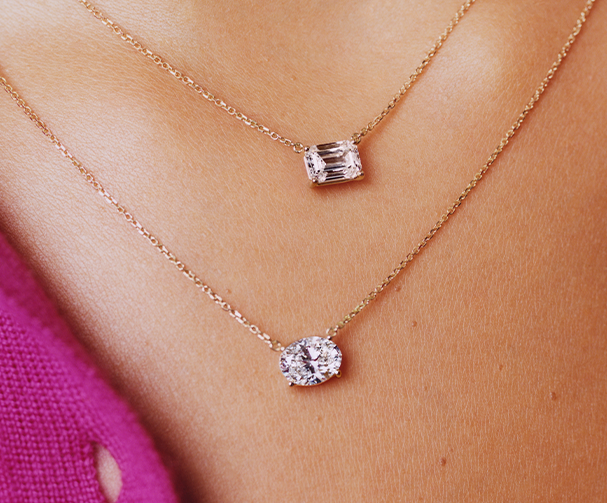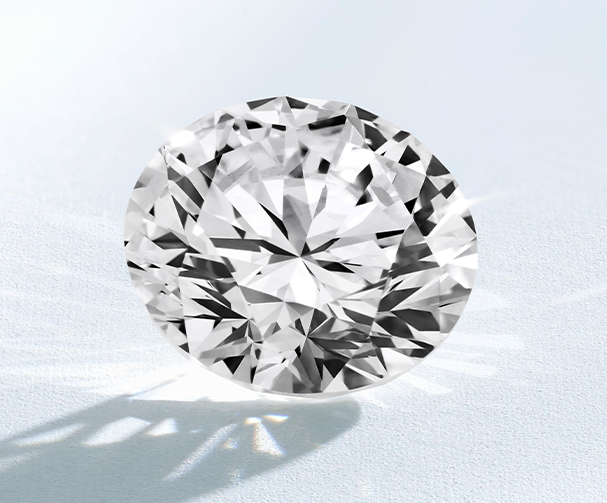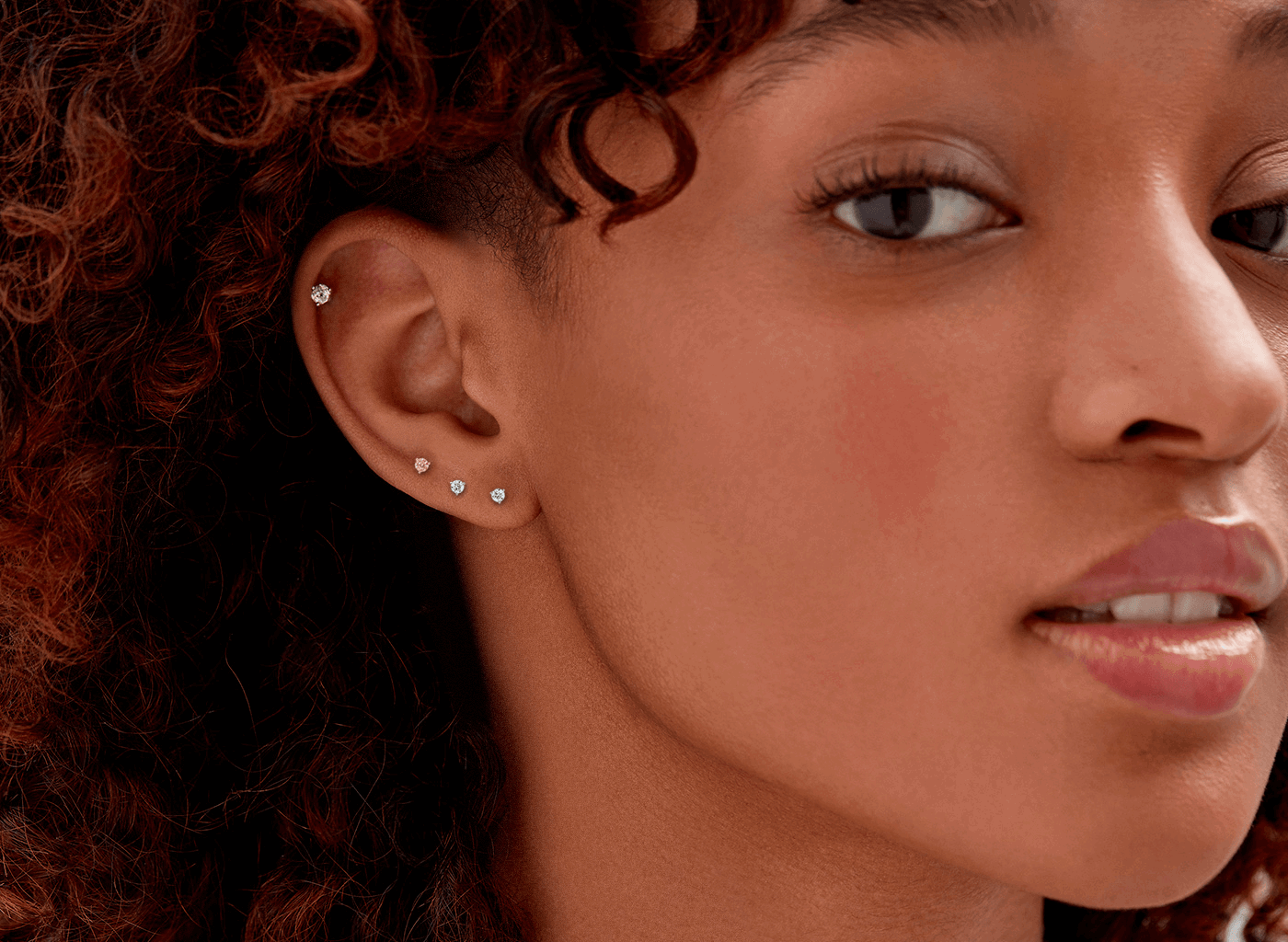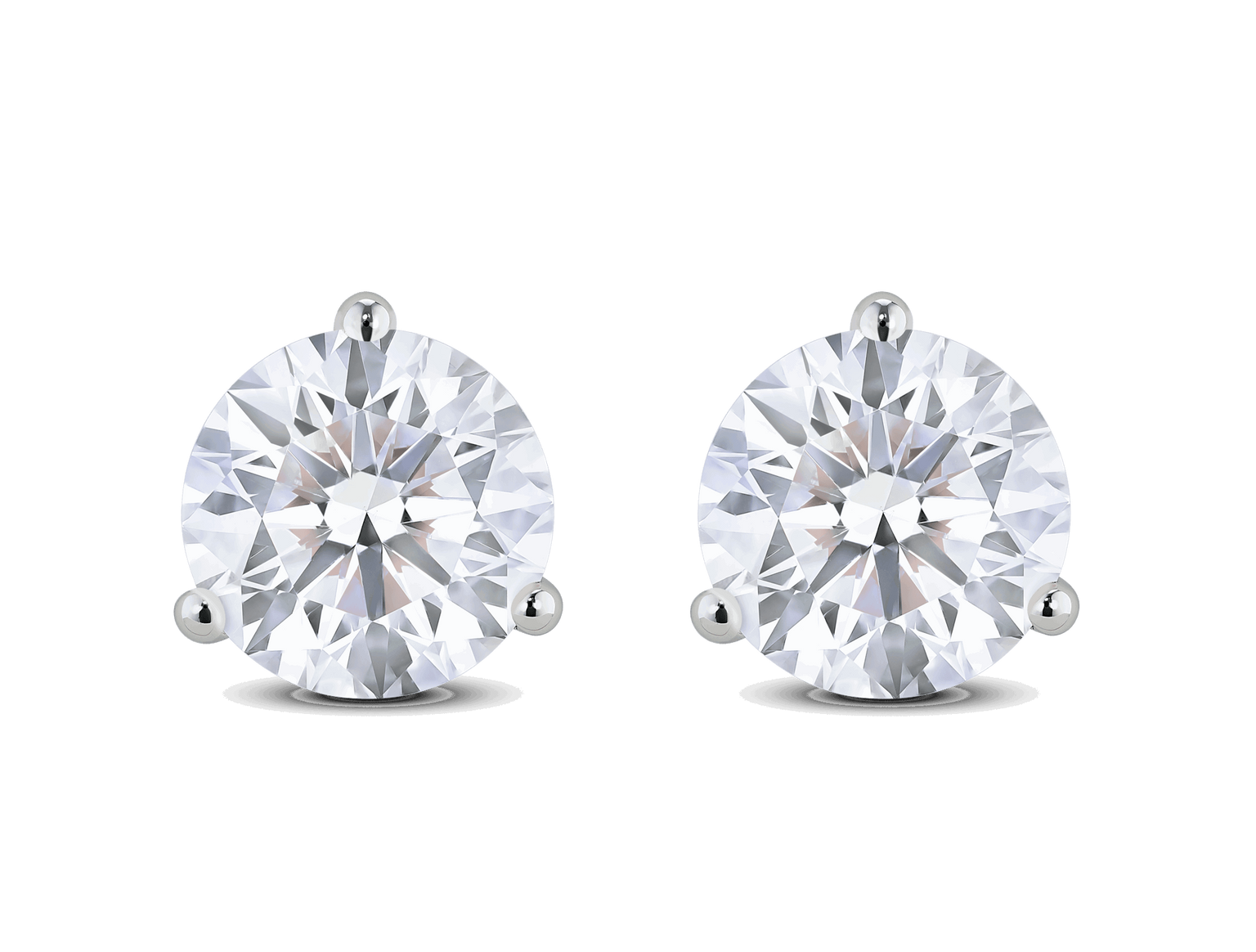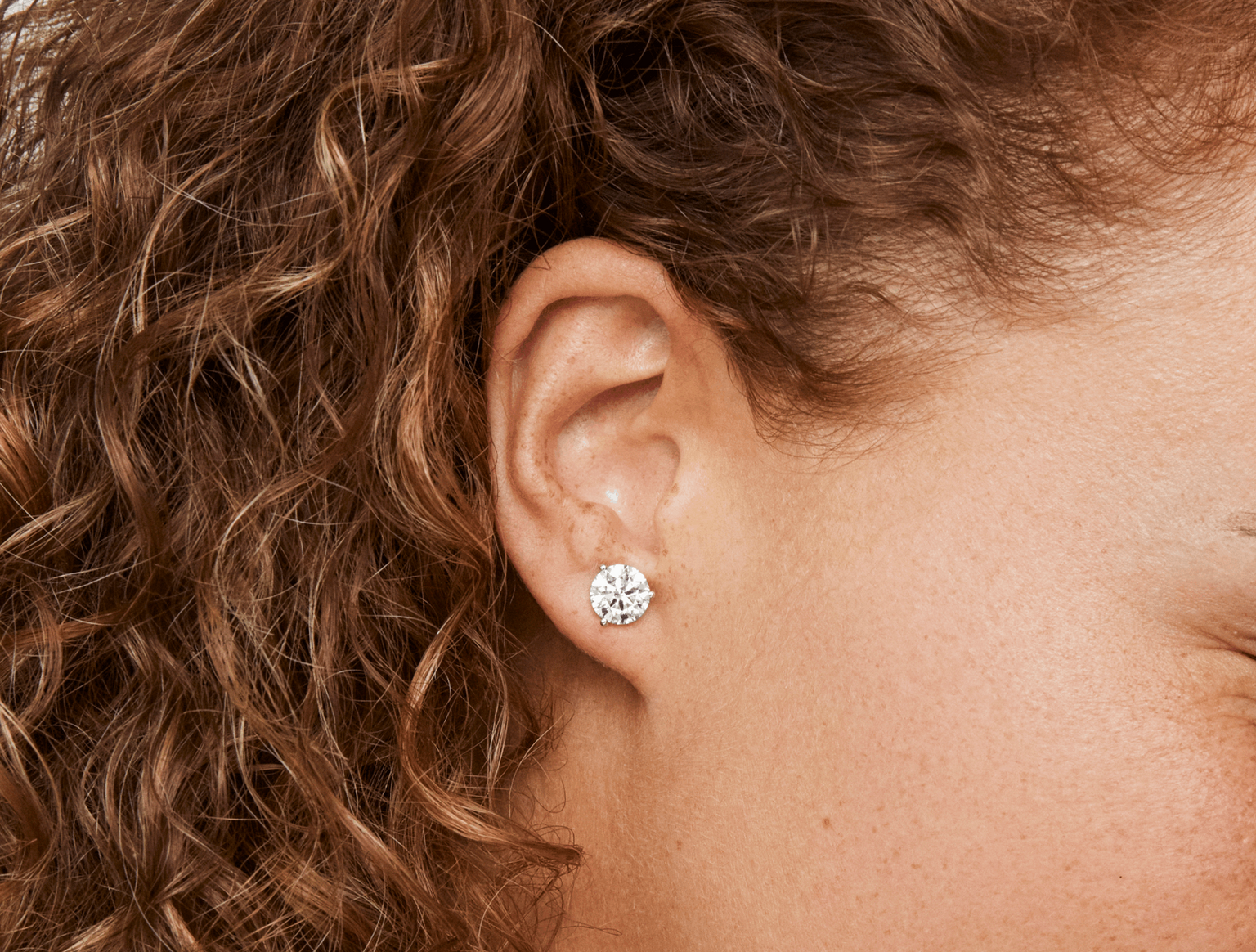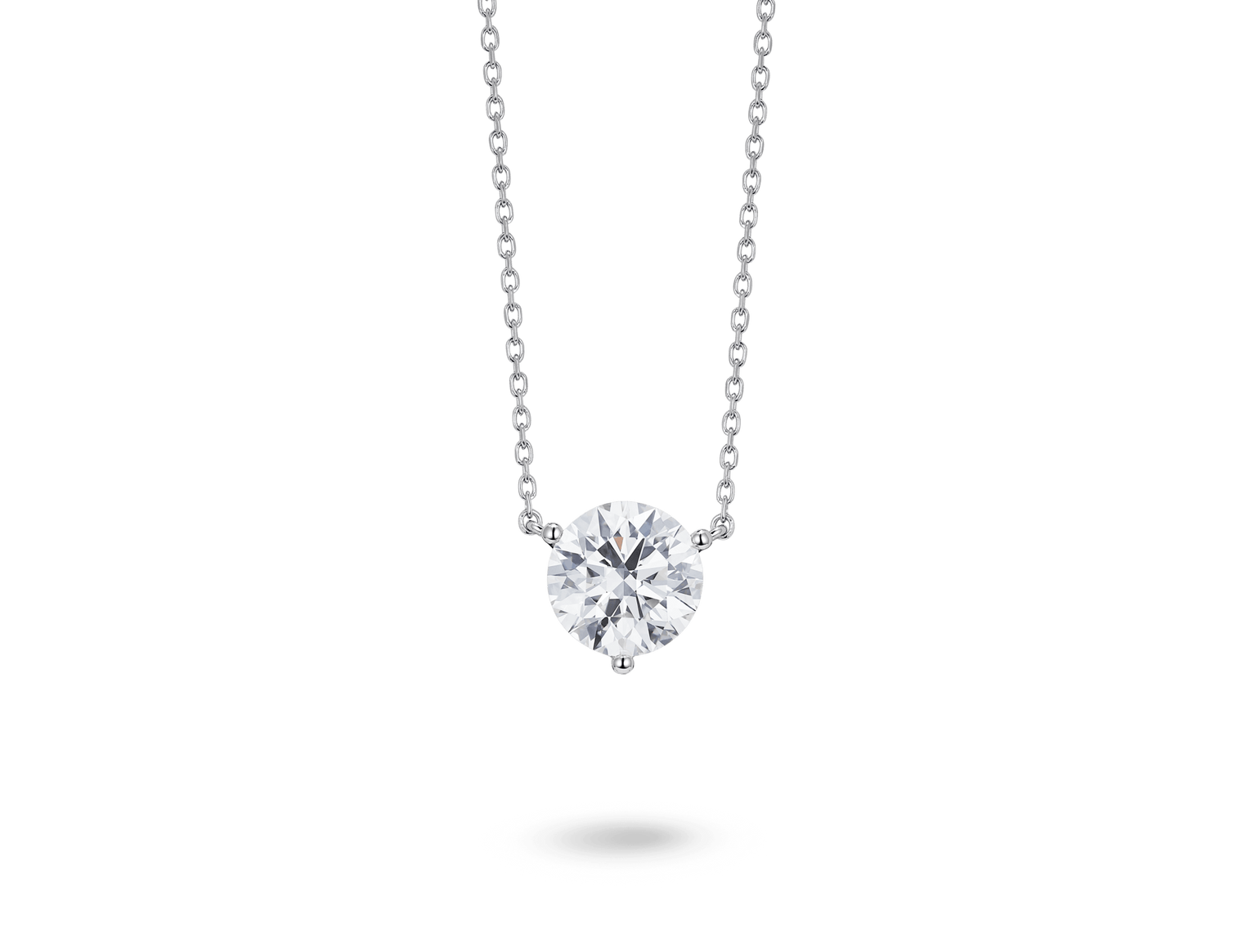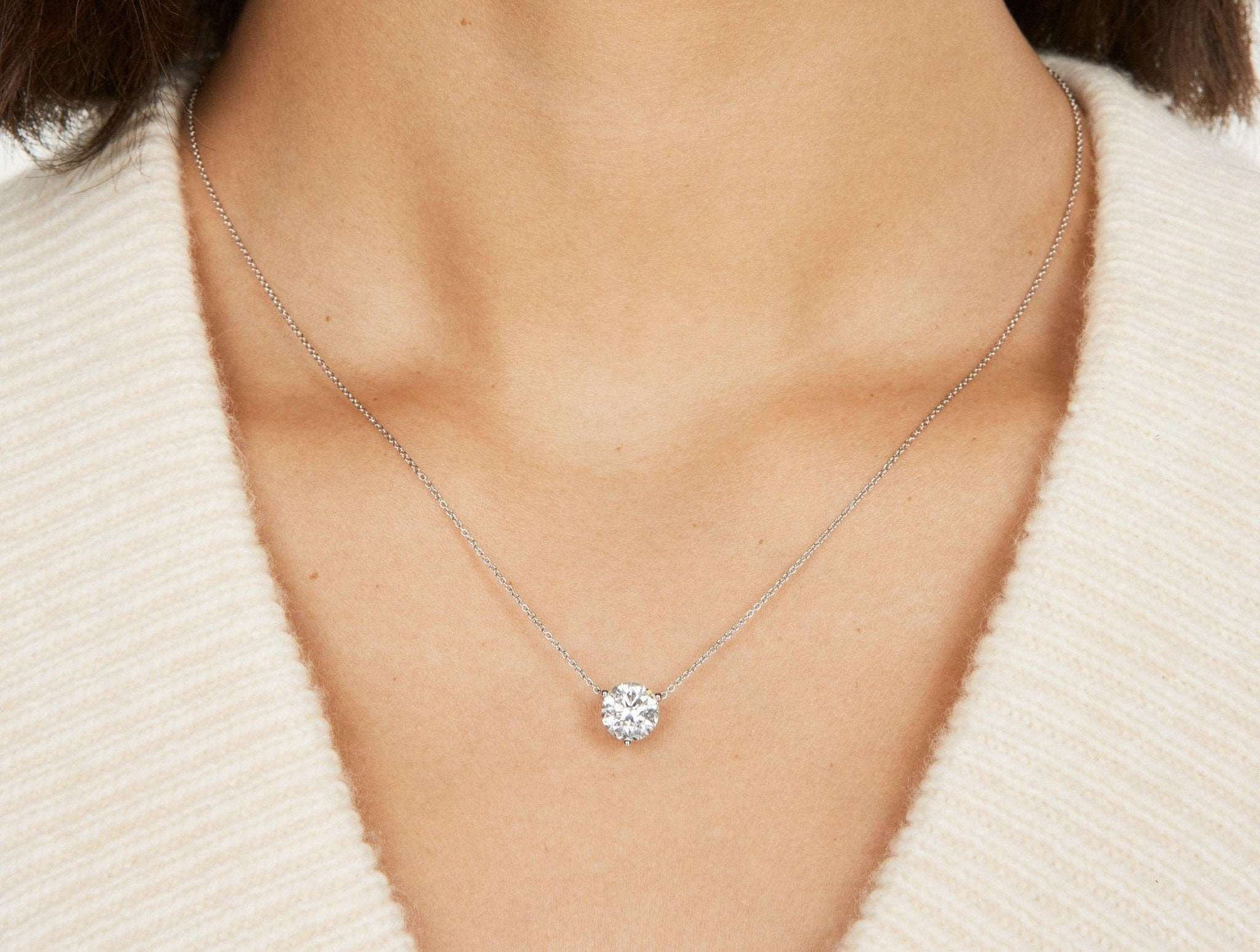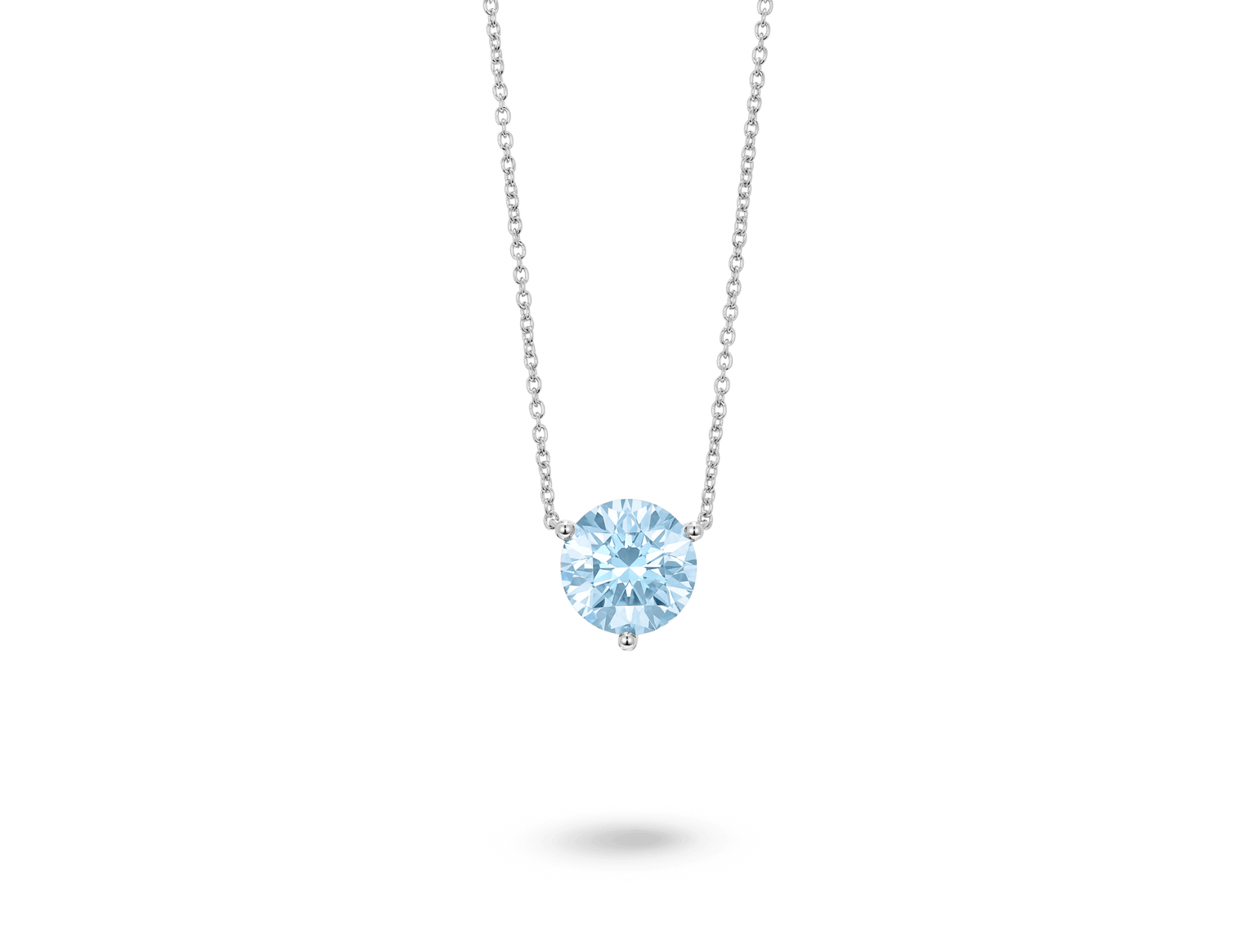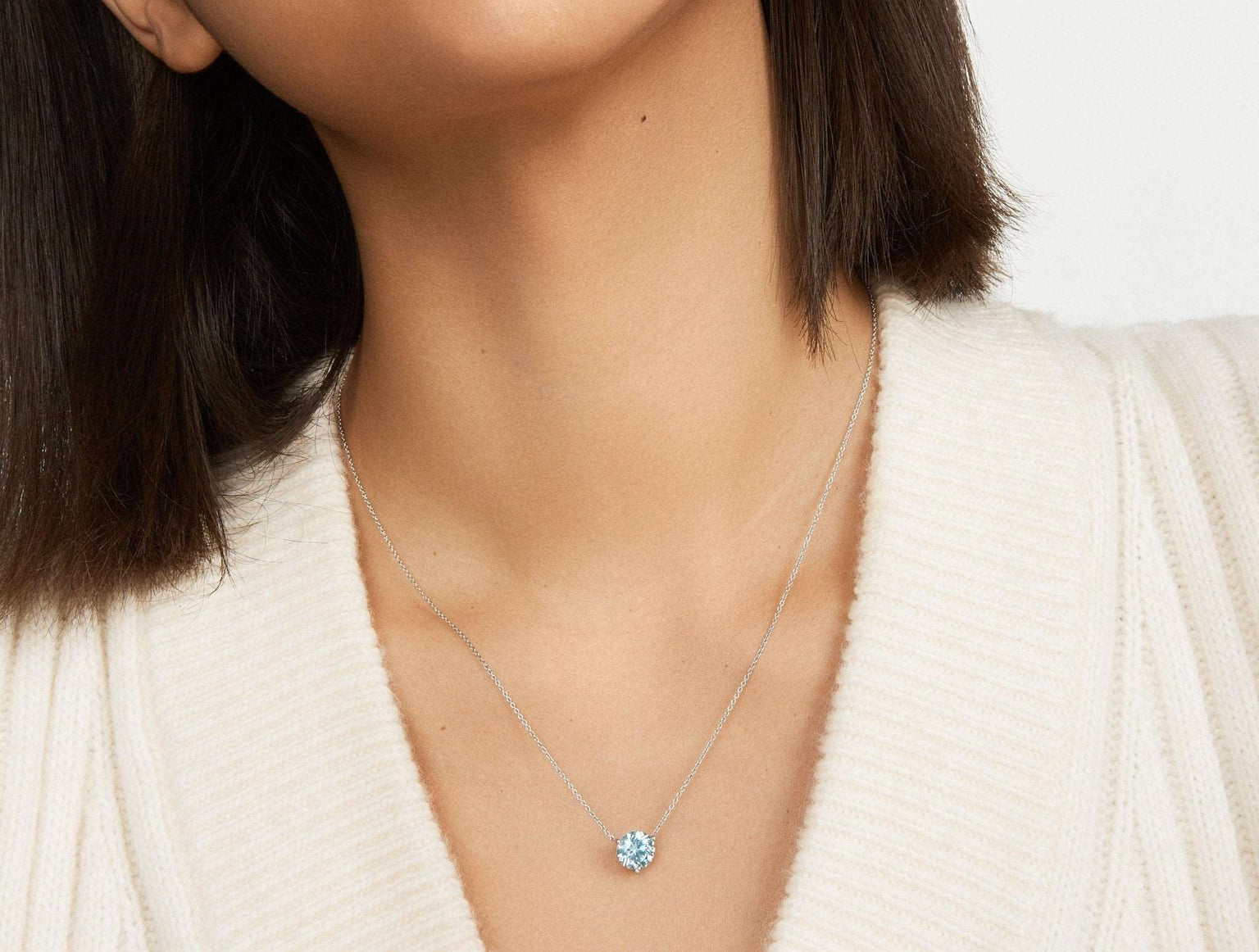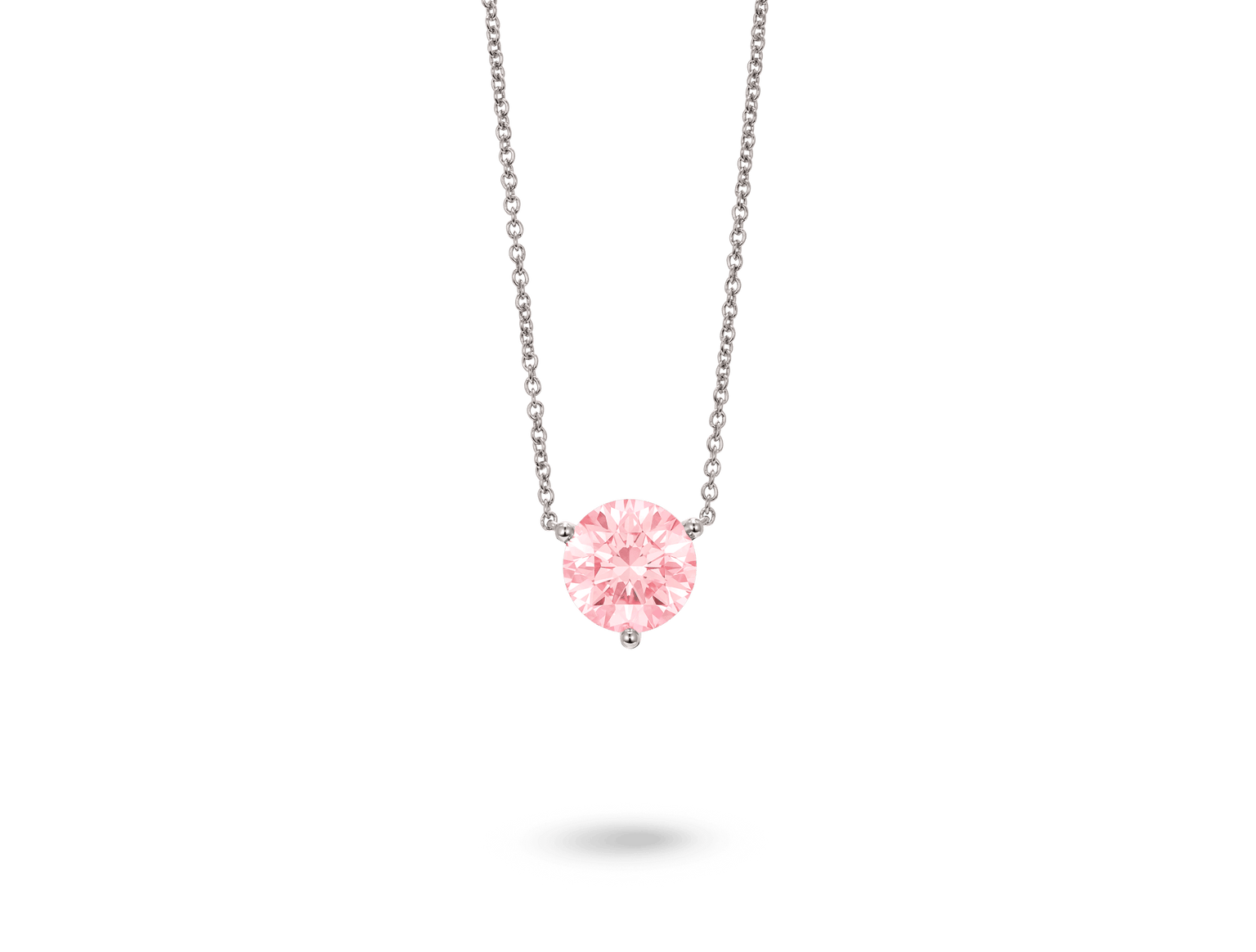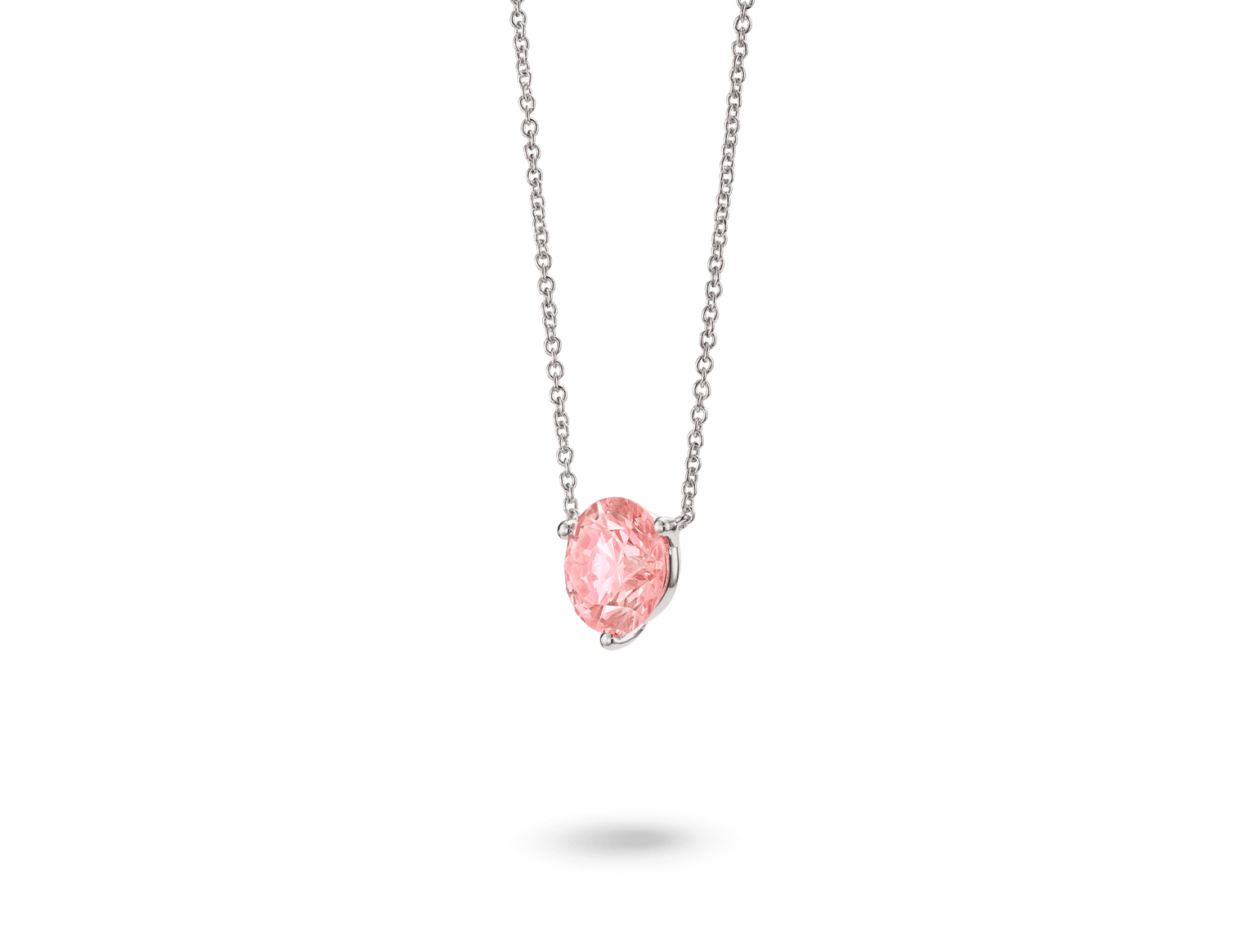When you imagine beautiful blush tones and dreamy materials, rose gold jewelry immediately comes to mind. This charming pink-hued metal continues to shine as a trendy option with a unique vintage flair. If you’ve noticed the popular rose gold hue popping up everywhere from hair color to housewares in recent years, you’re certainly not alone—this sophisticated jewelry trend is one that’s here to stay. That’s why at Lightbox, we design gorgeous rose gold settings to help complement the unmistakable brilliance of our lab-grown diamonds.
Whether you’re a lover of our rose gold, yellow gold, gold plated, or sterling silver collections, keep reading—because ahead, we’re uncovering the fascinating history, facts, and styling tips you should know before adding a rose gold piece to your Lightbox jewelry collection.
What is rose gold?
As one of the most widely adored precious metals, we can pretty much guarantee that you’ve encountered rose gold before. But despite its massive popularity, very few people actually know what sets this rose-colored metal apart from the rest. Let’s begin with the basics by learning about the history of rose gold, the properties that create its renowned beauty and grace, and how we use it in our lab-grown diamond designs.
The history of rose gold jewelry
It may be one of the trendiest metals in jewelry today, but rose gold is far from new. This metal with the blushing hue first appeared in early 19th century Russia, where it was originally reserved for the Russian aristocracy. It wasn’t until Carl Fabergé—the jeweler to the Russian Czars—featured rose gold in his celebrated Fabergé Eggs that this metal really soared in popularity.
Rose gold later caught the attention of French jeweler and watchmaker Cartier, who played a pivotal role in creating the luxurious standard of rose gold jewelry. In 1924, Cartier featured rose gold in his famous “Trinity Ring” (an elegant tri-color band featuring three separate rings of yellow, white, and rose gold). It was during the lavish 1920s that rose gold (also then known as “Russian gold”) really took the jewelry world by storm.
How is rose gold made?
Rose gold is what’s known as an alloy, which means that it’s made using a combination (or blend) of various metals. In other words, the gorgeous hue that we associate with rose gold does not occur naturally in today’s world. The signature rich, warm color of modern rose gold is actually achieved using a delicate combination of three specific metals: yellow gold as a base, copper, and silver. The final depth of color is determined by how much copper is added to the mix—the more copper, the deeper the reddish color of the rose gold. This means that you can find rose gold (also referred to as “pink gold”) in a variety of hues to match your lifestyle and preferences. Our rose gold designs feature 10-karat pure gold at their base, to create a universally flattering, eye-catching champagne rose color that’s perfectly balanced, with beautiful gold undertones.
Is rose gold real gold?
The short answer to this question is yes, absolutely! Although it is not made from 100% pure gold, rose gold is still real gold. Rose gold is an alloy (a combination of metals), but it is still very much the real deal. In fact, it’s no industry secret that jewelers use alloys—rather than pure gold—to create high-quality, long-lasting jewelry pieces. This is mostly due to the fact that, because it’s very soft and pliable, pure gold is not ideal for the daily wear and tear that most people desire from their fine jewelry. Alloys, on the other hand, form a stronger material that allows rose gold jewelry to be both stunning and durable.
Comparing rose gold with other precious metals
If you’re wondering how rose gold stacks up against other precious metals, you’ll be delighted to learn that rose gold holds its own in both durability and beauty. When it comes to yellow gold and white gold—the two other mixed alloys—rose gold has many unique benefits.
Perhaps the most obvious benefit of rose gold is its romantic blush-colored hue that instantly steals the spotlight. But don’t let rose gold’s distinctly elegant and dainty appearance fool you—this metal is surprisingly sturdy. Rose gold is sometimes considered more durable than yellow gold due to its copper content, which can make it less prone to scratches and damage. In fact, rose gold is so durable that it typically doesn’t require added layers of plating to protect it (unlike many other metals, such as white gold). For this reason, when compared to white gold jewelry—which contains a mixture of gold, nickel, and zinc—some may consider rose gold to be more sturdy against everyday wear and tear due to this difference in plating considerations.
Does rose gold jewelry tarnish?
Real rose gold doesn’t tarnish, but rather, creates a highly desirable protective outer layer over time known as the patina. This outer layer is formed as a result of rose gold’s copper content. However, this doesn’t mean that your rose gold doesn’t require the same care as other gold jewelry. It’s important to care for your rose gold jewelry with proper cleaning techniques and storage. Try polishing your rose gold jewelry periodically with a soft, dry cloth. Rose gold can darken slightly in color after many years (because of its copper content). Nonetheless, gold alloy is considered to be long-lasting options that holds up well against daily wear and can stand the test of time.
Why is rose gold so popular?
This metal’s obvious beauty is just one of the many reasons why it continues to soar in popularity. Its elegant pink-toned coloring complements all skin tones effortlessly in our Lightbox designs. That’s why we’ve carefully chosen to pair our rose gold settings with our universally flattering shade of lab-grown pink diamonds to create unbeatable beauty and that highly sought-after “classic look with a twist.” Additionally, rose gold is also considered more durable than some of the other precious metals. It provides the perfect happy medium between yellow and white gold. This metal is as versatile as it is stylish for both women’s and men’s jewelry, and its delicate color also suits many different styles
What does rose gold symbolize?
Rose gold embodies both the rich history of classical jewelry, as well as a more modern trendiness. In Lightbox designs, the beautiful pinkish tone of our 10-karat and 14-karat rose gold and rose gold-plated metals are glamorous yet subtle; luxurious yet accessible. But remember, the type of piece you choose can accentuate the warm tones of rose gold differently. Below are some Lightbox styling tips to keep in mind when picking out your rose gold jewelry.
How to style your rose gold jewelry
The options are really limitless when it comes to styling your rose gold jewelry. These pieces can be a fun way to branch out from your tried-and-true metals, or a subtle way to add a glamorous “pop” to your jewelry wardrobe. Rose gold is truly adaptable to all styles and preferences and, with a few tips, can easily work with any of our latest Lightbox jewelry pieces.
We recommend pairing your rose gold jewelry with a colorful palette, or mixing and matching metals for a more eclectic look. Try stacking your Lightbox rings or bracelets for versatility, but always try to pair your rose gold next to cooler shades, like white gold or sterling silver. Additionally, it’s important to mix rose gold with gemstones that glow under the warm, rose color of this metal.
And while all lab-grown diamond shapes can pair well with rose gold, we recommend a round brilliant or cushion cut setting for their unbeatable sparkle.
Caring for your rose gold jewelry
Rose gold is generally considered to be a pretty easy-to-maintain metal. Like most jewelry, it requires occasional cleaning and polishing to keep it looking its very best. As a first step, begin by polishing your jewelry with a soft, dry cloth. Next, you can soak your rose gold jewelry in warm water with soap for approximately 10 to 15 minutes, scrubbing gently with a soft bristled toothbrush.
When you’re finished, simply rinse and pat dry with a clean cloth. As an optional last step, use a polishing cloth to bring back the shine to the jewelry. However, if you have an antique rose gold and prefer a more patina look, skip the polishing and enjoy the natural look of your jewelry. For more care and cleaning tips, read our full guide here.
At Lightbox, we design rose gold jewelry that allows this romantic metal’s full beauty to shine alongside our lab-grown diamonds crafted in rose gold rings, rose gold earrings, and necklaces for any occasion. So if you’re ready to see the world through rose-colored glasses, it may be time to consider adding this metal of choice to your jewelry wardrobe for all occasions. To get started, check out our selection of exceptional lab-grown diamond jewelry set in lush rose gold.
